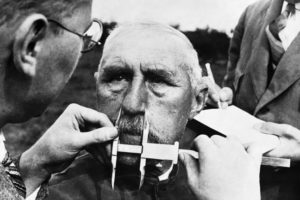“A nation is not conquered until the women’s hearts lay on the ground.” – Cheyenne Indian saying
War is often romanticised by those who have not had the misfortune to experience it. Or more specifically, by those who have not been on the receiving end of a repeated campaign of wide-spread, orchestrated sexual violence.
Such violence has recently been described by William Hague as “the slave trade of our generation.”
Sexual violence in conflict is hardly a new thing. It is often trivialised as being one of the “spoils” of war, in the same way that looting, death and instability is.
But what is new about the conflicts that have broken out since World War II is the deliberate targeting of women’s bodies as a strategy to destabilise your enemy.
As unpleasant as it is to document, rape has become the new weapon of mass destruction during wartime and was used against German, Russian, Japanese and Polish women during World War II, as well as in the Vietnam war. These practices were widespread and organised from the top levels of the military and government, in the sense that entire brothels and military systems were set up in a bid to organise the sexual violence and brutality against women for the entertainment of both domestic and foreign troops.
It was also used to subjugate entire communities during the Yugoslavian wars which took place in the 1990s.
The Yugoslavian wars consisted of the War in Slovenia, Croatian War of Independence, Bosnian War and Kosovo War.
Conservative estimates of the number of women raped during the Bosnian war are between 20,000 and 50,000.
Estimates of sexual assault rates range from three per cent to six per cent of Bosnian refugee women. Post traumatic stress symptoms were found in up to 75 per cent of Bosnian refugees.
During the Ugandan genocide an estimated 1,000,000 million people were killed, and around 500,000 women were raped and publicly stripped and humiliated as part of an ongoing ethnic cleansing campaign to wipe out entire civilian populations.
An estimated 5.4 million people died in the First Congo war between 1998 and 2003 and millions more are still perishing in the ongoing conflicts and skirmishes that are continuing in the region. A deadly and disturbing side-effect of this ofcourse is the country has now coined the reputation of being the ‘rape capital’ of the world, and with continuing conflicts in the region, that shows little sign of changing anytime soon.
In Darfur rates of rape are difficult to establish. Some estimate though, that more than 10,000 girls and women have been raped each year since 2003.
Assaults are often gang-related and sadistic. They may include other forms of physical torture such as mutilation, being paraded through the streets or even in the case of Bosnian muslims in Serbia being deliberately infected with HIV, forced to have children as part of an ethnic cleansing campaign and being sexually assaulted in front of television crews. The assault survivors may also lose their home and community if they are forced to move and as you can imagine, many suffer injury and illnesses which are quite extensive as a result of the assault. These women may also witness the murder, injury, or rape of loved ones. The effects of these types of trauma cannot be measured and are devastating both physically, emotionally and spiritually.
It has also been used in conflicts and uprisings occurring in other countries such as Bangladesh, Cambodia, Cyprus, Haiti, Liberia and Somalia.
In all of these wars, women of all ages are targeted and this includes babies, toddlers, teenagers, pensioners, as well as women of childbearing age. In many cases, the women are sold into sex slavery, killed or kept captive for years.
Even more disturbingly, the perpetrators of these crimes very rarely see justice for the crimes committed against them and the soldiers who do this often act in impunity. In the Congo for example, it is almost unheard of for a soldier – or more importantly – the general who he is acting under, to face trial or be imprisoned for his crimes. In fact, it is much more common for the victim herself to be ostracised, cast out of her community and in some cases even jailed for “adultery” or religious purposes.
William Hague, foreign secretary, said: “This is one of the greatest and most persistent injustices in the world. It is also one of the most neglected. We know that tens of thousands of women were raped in Bosnia-Herzegovina in the 1990s, hundreds of thousands in Rwanda’s genocide, and up to a quarter of a million in the Democratic Republic of Congo over the last decade.
“We know that a huge number of the victims of sexual violence are children: often very young children and sometimes babies.
“Yet the overwhelming majority of survivors never see any justice for what they have endured. And there has never been any concerted international effort, supported by leading nations of the world, to eradicate sexual violence in conflict in the first place. This has to change. To my mind, this is the slave trade of our generation.”
The scale of these attacks has been so widespread and disturbing that it has been documented in publications such as the British Medical Journal, the UN and more recently, by the G8 meeting in London.
On April 11th 2013, the leaders of the world’s most powerful countries came together to discuss ways in which they can address sexual violence in conflict.
They pledged £10 million to go towards to go towards conducting research about sexual violence being used to target women and girls during conflict.
William Hague, foreign secretary, said: “I am delighted that we can support today’s historic agreement by announcing additional funds to support grassroots and human rights projects on sexual violence in conflict and projects addressing violence against women and girls.”
The money will be used to fund the Violence Against Women and Girls (VAWG) Research and Innovation Fund, which will fund work in up to five countries, looking at what drives and causes VAWG in emergency and conflict settings. It will look specifically at what types of violence takes place and which interventions are the best response and prevention for violence.
Justine Greening, secretary of state for International Development, added: “This new research will help us find out what works to bring real change and will feed into our programmes to protect women and girls in current emergencies in the Democratic Republic of the Congo and in the Syrian refugee crisis.”
Although any move to acknowledge and address the problem of sexual violence in wartime must be welcomed, the question must be asked: “Is this enough?”.
The uncomfortable truth is, as has been seen in previous conflicts, we are not just dealing with a few hundred rogue soldiers who are perpetrating these acts. We are essentially talking about the systematic use of rape which is sanctioned, encouraged and supported by military generals, commanders-in-chiefs and even governments.
In the Vietnam war for example, U.S. presidential candidate, John Kerry, testified before the U.S. Senate and stated that over 150 U.S. veterans testified during the Winter Soldier Investigation and described war crimes committed in Southeast Asia.
During his testimony he stated: “They told the stories of times that they had personally raped, cut off the ears, cut off heads, taped wires from portable telephones to human genitals and turned up the power, cut off limbs, blown up bodies, randomly shot at civilians, razed villages in a fashion reminiscent of Genghis Khan, shot cattle and dogs for fun, poisoned food stocks and generally ravaged the countryside of South Vietnam in addition to the normal ravage of war and the normal and very particular ravaging which is done by the applied bombing power of this country.”
in 1941, the Japanese authorities actually conscripted Korean women into a corps of ‘entertainers’ to ‘comfort’ the Japanese troops in Manchuria. With the beginning of the Pacific War, around 50,000 to 70,000 Korean girls and women were drafted and sent to ‘entertain’ the Japanese troops.
Therefore, throwing money alone at the problem is not going to bring an end to the suffering of millions of women, children and men who are effectively under siege from armed soldiers and militia during conflict.
For that reason, the solution must be a lot more holistic. Grassroots organisations in countries across the world, along with public pressure and exposure are perhaps the best placed to force the governments to punish the perpetrators of these war crimes and provide independent checks and balances in the countries concerned.
Ultimately the best solution to war and brutality is peace. Whilst war is certainly not the only cause of sexual violence, it is one of the main catalysts for widespread sexual violence perpetrated against hundreds and thousands of women, children and in some cases, men within a nation.
Therefore, a strong, organised movement against war, conflict and violence against women will be the only truly effective way of preventing this particularly cancerous and brutal disease from spreading any more than it already has.
















Follow Us!